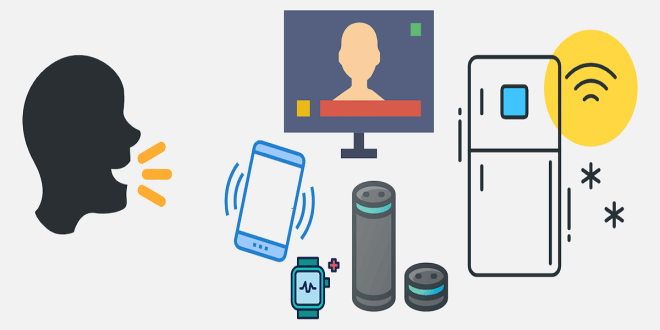In recent years, the digital landscape has witnessed a remarkable transformation with the proliferation of Voice User Interfaces (VUI) and the advent of Conversational UX. These innovative technologies have revolutionized the way we interact with our devices and have become an integral part of our daily lives. In this blog, we delve into the fascinating world of VUI and Conversational UX, exploring their rise, impact, and potential. Join us on this journey as we unlock the secrets of these cutting-edge technologies and understand how they are shaping the future of user interfaces.
Understanding Voice User Interfaces (VUI)
Voice User Interfaces, or VUI, are interfaces that allow users to interact with devices or applications using voice commands and natural language. Unlike traditional graphical user interfaces, VUI relies on speech recognition and synthesis technologies, enabling seamless and intuitive interactions. From voice assistants like Siri and Alexa to smart home devices, VUI has permeated various aspects of modern life, making tasks more convenient and accessible.
The Growth of VUI in Everyday Devices
In recent years, VUI has experienced exponential growth, becoming a common feature in smartphones, smart speakers, and even cars. The ease of use and hands-free convenience offered by VUI have contributed significantly to its widespread adoption. As technology continues to advance, we can expect VUI to become an integral part of various other devices and services, further enhancing the overall user experience.
Challenges in VUI Development
While VUI presents numerous opportunities, its development comes with its fair share of challenges. Achieving accurate speech recognition, handling natural language variations, and ensuring context-aware responses are some of the hurdles that developers face. Nevertheless, continuous advancements in artificial intelligence and machine learning have significantly improved the performance and reliability of VUI systems.
The Emergence of Conversational UX
Conversational User Experience, or Conversational UX, is the broader concept encompassing VUI and other conversational interfaces. It focuses on creating interactive and personalized experiences that mimic human conversation. Whether it’s chatbots, virtual assistants, or interactive voice response systems, Conversational UX aims to make interactions more natural, engaging, and efficient.
Personalization and Contextual Understanding
One of the key strengths of Conversational UX is its ability to understand context and personalize interactions. With access to user data and preferences, conversational interfaces can tailor responses, providing a more relevant and delightful experience. This personalization fosters a stronger bond between users and technology, fostering loyalty and usage.
Enhanced Customer Support and Engagement
Businesses have embraced Conversational UX as a powerful tool to improve customer support and engagement. Interactive chatbots can handle customer queries in real-time, reducing response times and enhancing customer satisfaction. Additionally, Conversational UX can be leveraged in marketing campaigns, providing personalized recommendations and driving better conversion rates.
User Interface Design for VUI and Conversational UX
Creating effective user interfaces for VUI and Conversational UX demands a thoughtful and user-centric approach. Here are some essential principles to consider:
Simplicity and Clarity
VUI and Conversational UX should prioritize simplicity and clarity in their interactions. Avoid complex language or lengthy responses, ensuring that users can easily comprehend the information provided.
Natural Language Processing (NLP)
Incorporate advanced NLP techniques to understand and interpret user input accurately. NLP allows for more nuanced and contextually appropriate responses, enhancing the overall user experience.
Empowering Users with Control
Provide users with clear instructions on how to engage with the interface effectively. Allow users to take control of the conversation and dictate their preferences.
Seamlessness Across Devices
Ensure seamless integration across different devices, enabling users to transition from one platform to another without losing context.
Error Handling and Recovery
Plan for potential errors or misunderstandings in user input and design robust error-handling mechanisms. Offering clear instructions on how to correct misunderstandings can prevent user frustration.
User Interface Design Softwares for VUI and Conversational UX
Developing VUI and Conversational UX requires specialized tools and software. Here are some popular software solutions to aid in the design process:
Dialogflow
Dialogflow, a Google Cloud product, enables developers to build natural and interactive conversational interfaces. Its advanced NLP capabilities and easy integration with various platforms make it a preferred choice for many developers.
Amazon Lex
Amazon Lex, powered by the same technology behind Alexa, allows developers to build conversational interfaces for various applications. Its deep learning capabilities and scalability make it suitable for both small-scale projects and large-scale deployments.
IBM Watson Assistant
IBM Watson Assistant provides a robust platform for creating AI-powered chatbots and virtual assistants. With its user-friendly interface and extensive support for multiple languages, developers can quickly build and deploy conversational applications.
Frequently Asked Questions (FAQs)
Q1. How secure are Voice User Interfaces (VUI)?
VUI systems incorporate robust security measures to protect user data and prevent unauthorized access. Encryption, user authentication, and data anonymization are some of the security features implemented to ensure user privacy.
Q2. Can VUI work in noisy environments?
Yes, modern VUI systems are designed to filter out background noise and focus on the user’s voice. However, extremely noisy environments may still pose challenges for accurate speech recognition.
Q3. How can Conversational UX benefit businesses?
Conversational UX enhances customer support, increases engagement, and provides personalized experiences. Businesses can use it to streamline interactions, reduce response times, and gather valuable customer insights.
Q4. Are Conversational UX systems only for large enterprises?
No, Conversational UX is suitable for businesses of all sizes. With the availability of user-friendly platforms and cloud-based solutions, even small businesses can leverage Conversational UX to improve customer interactions.
Q5. Can Conversational UX understand multiple languages?
Yes, many Conversational UX systems support multiple languages, allowing businesses to cater to a global audience and broaden their reach.
Final Words
The rise of Voice User Interfaces (VUI) and Conversational UX has transformed the way we interact with technology. With their seamless interactions and personalized experiences, VUI and Conversational UX have revolutionized user interfaces and opened up new possibilities for businesses. As technology continues to advance, we can expect these interfaces to play an increasingly significant role in our daily lives, shaping the future of digital interactions.
 webfily
webfily



